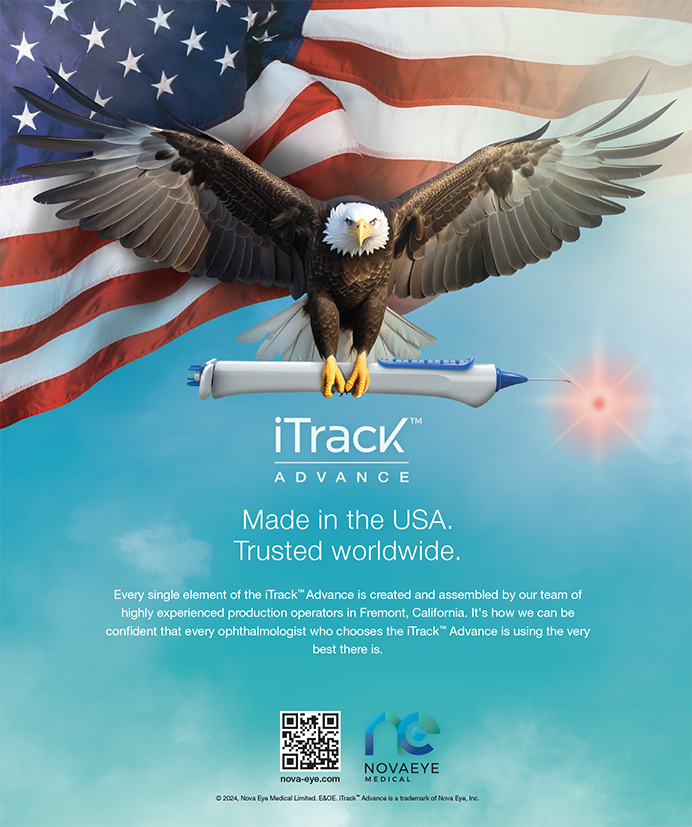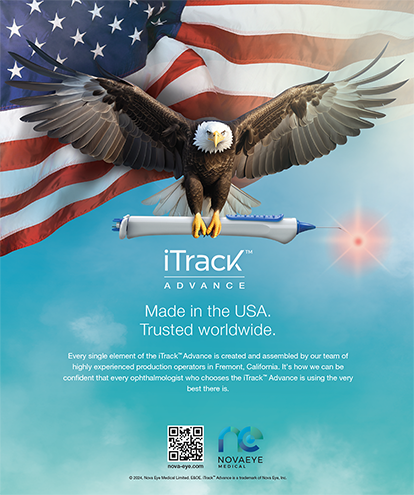Product development in ophthalmology is one of the most exciting and rapidly changing aspects of our innovative field. Every few weeks, I learn about newly released products or those on the horizon. New products offer the hope of conquering old problems.
Bringing a new product to market requires an incredible amount of strategic planning, financing, and execution. Clinicians’ role in this process can vary, but their involvement is crucial to the creation of products that solve real problems.
PROBLEM SOLVING
In his article, “Successful Innovators Don’t Care About Innovating,” Harvard Business Review blogger Doug Sundheim asserted that the true engine for innovation is good old-fashioned problem solving.1 Physicians are in the trenches every day and understand the real challenges they and their patients face. Problem solving is the practical contribution that physicians can make to the product development process.
In the business world, there is an axiom that customers are usually only interested in products that are new, improved, or improving, which drives companies simply to fuel the perception of corporate excellence in research and development. In reality, some of the “innovations” they tout are mostly hype and leave customers (physicians and/or patients) underwhelmed.
Since finishing my residency in 2008, I have been fortunate to have had many opportunities to work with industry as a consultant. From informal conversations to advisory board meetings, I have gained a deep appreciation for the work required to launch a product into the marketplace. Bringing a great idea to life requires due diligence at every point. Physicians’ insight into the need for a product as well as its use, shortcomings, and potential for improvement is vital. Most venture capital groups have subspecialty-specific physicians on speed dial to vet any technology in which they are considering an investment.
Product development is not always led by industry—a good thing in my opinion. When I talk to doctors about a common problem, I am frequently astounded by the great ideas that are spontaneously generated. None of these doctors would call themselves innovators. Rather, they see themselves as interested in helping their patients and profession advance.
COLLABORATIVE OPPORTUNITY
Physicians are often reluctant to develop new ideas, because they focus on practicing medicine rather than on entrepreneurial endeavors. Because intellectual property is a nebulous commodity to protect, physicians often do not share ideas for fear of a company’s stealing them. Such complexities kill innovation.
About 3 years ago, I had an idea for a new IOL. I formed a company, patented the technology, raised funds with the help of my business partner, and put together a team that is capable of executing the development process (See “How to Bring an Idea to Life” in the February 2014 issue of Cataract & Refractive Surgery Today). Although my journey has been a bit unconventional, I am not sure it should be. The most fertile ground for innovation is on the frontlines of medical care, not in a boardroom. The opposite is true for the execution of an entrepreneurial business plan that can take a product from concept to market. The skills required to generate an idea and to bring it to market are rarely, if ever, found in a single individual. That is what makes collaboration between physicians and industry so valuable.
CONCLUSION
The Physician Payments Sunshine Act has made physicians’ relationships with industry subject to scrutiny. The purpose of the legislation was to bring transparency to the relationships between physicians and industry. The law “requires the manufacturers of drugs, medical devices, and biologicals that participate in US federal health care programs to report certain payments and items of value given to physicians and teaching hospitals.”2 Also included are select ownership interests of doctors and their immediate family.2
I would argue nevertheless that physicians need to look for ways to contribute to innovation and product development whenever possible. Where would the field of cataract surgery be today if Dr. Charles Kelman had not developed phacoemulsification?n
1. Sundheim D. Successful innovators don’t care about innovating. Harvard Business Review. https://hbr.org/2014/10/successful-innovators-dont-care-about-innovating. Accessed December 4, 2014.
2. American Medical Association. Toolkit for physician financial transparency reports (Sunshine Act). https://www.ama-assn.org/ama/pub/advocacy/topics/sunshine-act-and-physician-financial-transparency-reports.page. Accessed December 4, 2014.
Gary Wörtz, MD
• founder of Omega Ophthalmics in Lexington, Kentucky
• practices at Commonwealth Eye Surgery in Lexington, Kentucky
• (859) 224-2655; garywortzmd@gmail.com


